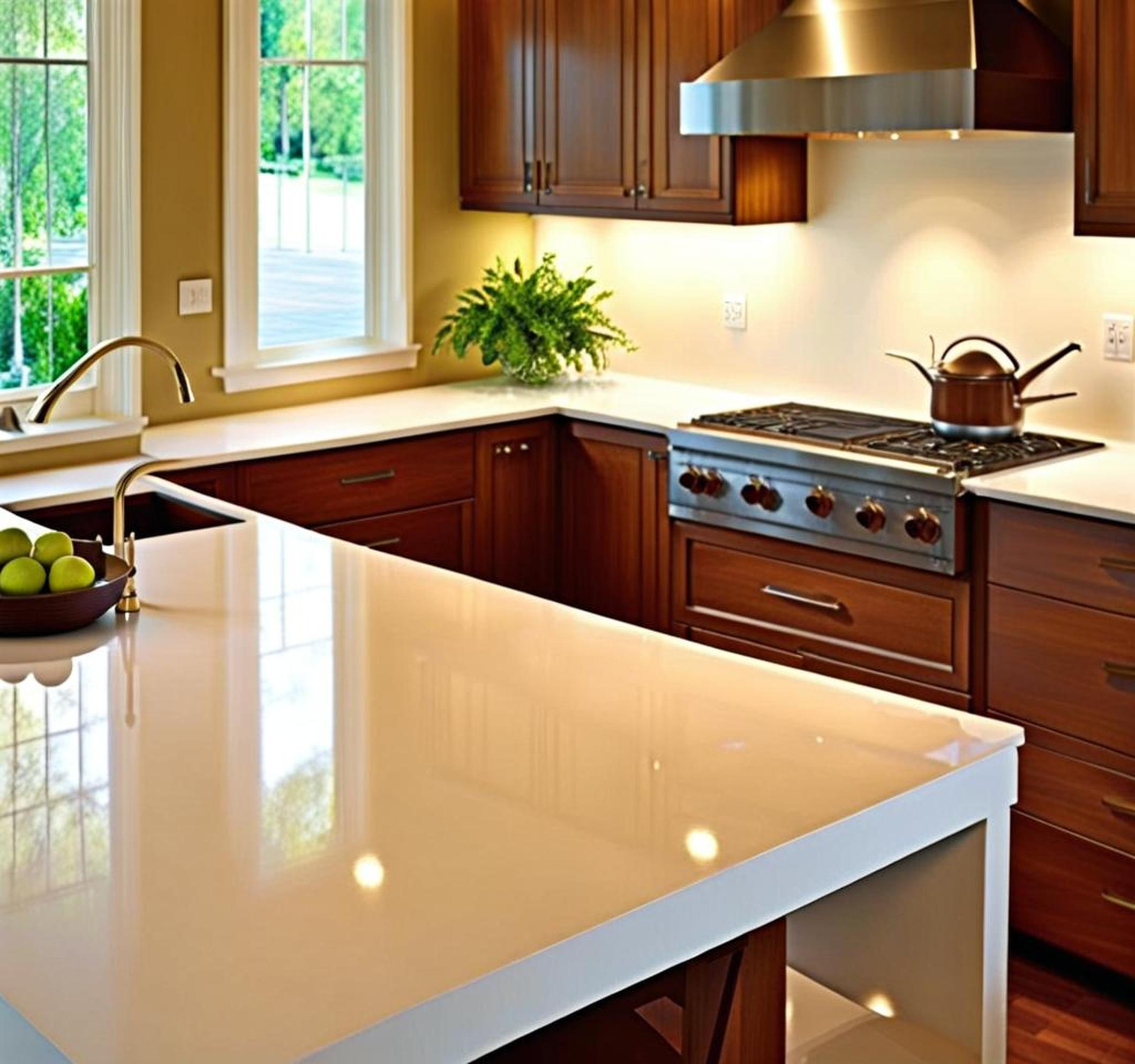Over time, Corian countertops are susceptible to cuts, scratches, and general wear and tear. While minor scratches can be buffed out, deep scratches can become an eyesore. Before replacing the whole countertop, try restoring the surface to its original beauty by polishing out those annoying scratches.
Why Do Scratches Appear on Corian Countertops?
Corian is an acrylic-based solid surface material that is known for its aesthetic appeal and durability. However, the synthetic composition that makes it both durable and flexible also makes Corian prone to scratching, especially on darker colors.
Common causes of scratches include:
- Using sharp knives directly on the surface
- Sliding pots, pans, or appliances across the countertop
- Cleaning with abrasive pads or cleaners
- General wear and tear over time
Assessing Scratch Severity on Corian
Before attempting to polish out scratches, it’s important to assess their depth and severity. Very light, surface level scratches can be buffed out through regular polishing methods. However, deeper grooves may require more intense polishing or professional resurfacing.
Factors to consider when evaluating scratch severity:

- Width of the scratches – are they hairline or wider?
- Depth – are they just on the surface or gouged deeper?
- Direction – are they all going the same way or different directions?
If the scratches are minor, polishing yourself is likely an option. For refinishing deep scratches, contacting a professional may be best.
Gather Supplies for Polishing Corian Countertops
Polish out light scratches by collecting a few key supplies:
- Clean cloths
- Corian solid surface cleaner
- Sandpaper – 220, 400 and 600 grit
- Variable speed polisher
- Plastic polish compound
- Polishing pad or buffing wheel
For deeper scratches, start with a lower grit sandpaper like 220. For light surface fixes, 400 or 600 grit is often sufficient.
Step-by-Step Instructions for Polishing Corian
Follow these steps to banish annoying scratches:
- Clean the countertop thoroughly with water, a Corian cleaner and a fresh cloth to remove any dirt or residue.
- Lightly sand the surface in the direction of the scratches using 400 or 220 grit sandpaper, depending on depth.
- Wipe away sanding dust with a clean, damp cloth and Corian cleaner.
- Repeat by sanding again with a finer grit sandpaper, like 600.
- Apply a plastic polish to a buffing wheel or pad attached to a low-speed polisher.
- Buff the countertop in small circular motions until the finish shines. Remove polish residue with a clean cloth.
Tackling Stubborn Corian Scratches
For deeper scratches that refuse to disappear, repeat the sanding process using incrementally finer grit sandpapers like 400, 600, 800. This gently smooths them out over time.
For isolated problem scratches, spot treat only those areas. Use finer grit wet-dry sandpaper to target just the scratch. Buff with polish.
If extensive deep scratches remain after polishing, contact a professional for resurfacing options.
Maintaining a Scratch-Free Corian Surface
Once restored to its former glory, keep Corian scratch-free by:
- Using cutting boards and avoiding dragging objects across the surface.
- Cleaning gently daily and polishing frequently.
- Immediately addressing any new light scratches.
Frequently Asked Questions
Can I use household items to polish Corian?
While specialized polishes work best, toothpaste or baking soda can be used in a pinch. Apply a small amount to a soft cloth and rub in circular motions. For toothpaste, rinse afterwards. Baking soda can be wiped away once dry.
How do I achieve a high-gloss finish?
Start with 400 grit sandpaper to smooth the surface. Use a 600 grit “wet sanding” technique to further prepare the Corian. Then buff using a low-speed polisher and plastic polish, frequently checking the shine level and moving to a finer buffing pad as it increases.
Can deep scratches be removed completely?
Very deep gouges in Corian may not buff out fully, but their appearance can be greatly minimized with thorough polishing. If they remain visible, professional resurfacing may be required.
You can get rid of scratches with this simple guide. Try restoring the surface shine yourself before spending money on a complete replacement.
